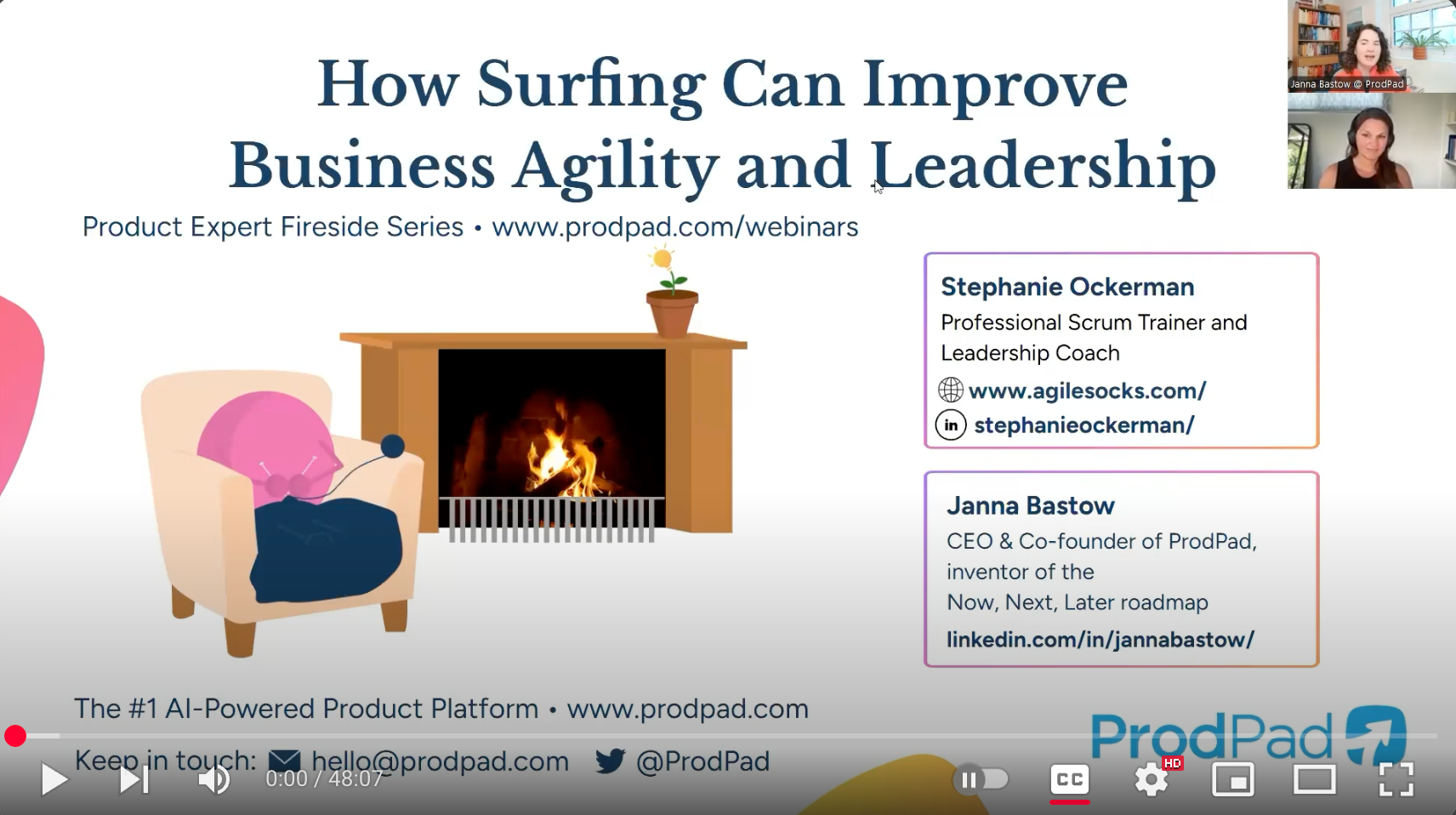
In the Scrum framework, the Scrum Master is accountable for establishing Scrum as it’s set out in the Scrum Guide and for the team’s effectiveness. It’s the second accountability that often trips people up.
As Scrum Masters, we know everyone will look to us if the team isn’t performing well. Yet it’s the team that decides how it will get the work done, and many unknowns and unexpected challenges emerge throughout the Sprint. It’s impossible to perfectly predict what our customers want or what shifts in the market lie ahead. Very little of the outcome is within our control in a complex work environment.
So, how does one navigate having accountability without having control as a Scrum Master? Let’s delve into it.
Anyone who thinks they have control working in a complex environment is living an illusion and likely feels very frustrated. Yet many of us resort to activities we believe will give us greater control over outcomes when we feel the pressure to perform. We begin to think we have to have all the answers and that our approach to solving issues is the best.
I call this the trap of the knowing-and-controlling mindset, which, unfortunately, leads to a cascade of misery, including:
When we think we need control over everything, it can feel like the weight of the world is on our shoulders. From that place of chronic stress, it’s difficult to stay open and curious, to observe with the level of awareness needed to see the whole and make intentional choices that will best serve ourselves, others, and the “bigger thing” (a world where everyone can thrive).
When we start micromanaging the team’s work, it undermines trust, ownership, and ultimately self-organization. Micromanaging can begin subtly with something as simple as disguising advice or a preferred path as a question (e.g., Have you tried X?).
We push for decisions before the necessary exploratory discussion. We don’t hear the ideas from the team, explore and build upon those ideas, and come to a consensus, which ultimately shuts down creativity and innovation.
Under the stress of trying to wrestle control, we can rely too heavily on our personal experiences. We assume that because something worked in our previous environment, it’s the right thing for our present team’s context. This can lead us into a “best practices” trap where we become more focused on doing Scrum rather than being agile.
Under pressure to perform, we resort to acting without processing and rushing to criticize others. For example, you might assume someone is trying to undermine you, so you say something to belittle them. This behaviorbehaviour can significantly affect team dynamics and chips away at our ability to influence others positively.
Our overriding desire to come up with the perfect strategy to approach the team and address organizational challenges can leave us in a state of powerlessness and inability to act. We plan and re-plan rather than experiment, learn, and try again. This fear of failure transmits to the team and runs contrary to Scrum’s foundation of empiricism.
Our energy is contagious. Sliding into a knowing-and-controlling mindset will seep into the team and broader organization. It can lead to more upfront planning, getting CYA sign-offs, more “status” meetings to monitor progress, and measuring the wrong things because it gives us the illusion of control. Essentially, we end up with a whole lot of waste and less focus on frequent delivery and valuable outcomes.
No one enjoys failing. But, without mistakes and missteps, we can’t learn, grow, and innovate. Unfortunately, how our evolutionary brains are wired and social conditioning have led many of us to fear and avoid failure. We view it from a place of shame.
Viewing failure negatively can really mess with our heads, lowering self-esteem and raising anxiety levels. We can start to pay too close attention to what could go wrong rather than how we can benefit from experimentation. The stress that comes with this mindset can actually hamper our best efforts and performance. Our brains (and bodies) don’t perform well when we’re anxious.
The fear of failing is one of the strongest triggers for relying on control to manage outcomes. Paradoxically, when we can let go of the need to control in favor of enabling the team as a servant leader, effectiveness and success are more likely.
You can have an effective team and fail. Failing is inevitable when trying to achieve something new, bold, and complicated. Scrum is not about removing failure from the equation; it’s about containing it and using what we’ve learned from it to move forward. Failing is not the opposite of success; it’s part of success.
Separating self-worth from outcomes and treating failure as “just an experience” we can learn from is easier said than done. As Scrum Masters, knowing we should embrace failure but struggling to do that can itself become anxiety-provoking! No one achieves perfection — we are all works in progress.
Our job as Scrum Masters is to bring out the best in our team members, making it as easy as possible for them to achieve the most value for the customer. A good part of that is creating the optimal conditions for the Scrum framework. Equally important is our approach with this accountability — it’s how we show up daily for our team.
One part of my Agile Socks Method for Scrum Masters is the Leadership Alignment Tool, which can help keep us grounded and positioned to achieve maximum impact and influence. It poses six questions to ask yourself to optimize your influence and impact on your team.
American research professor, bestselling author, and podcaster Brene Brown defines whole-hearted living as “engaging in our lives from a place of worthiness,” rather than shame and comparison with others. It’s impossible as a human to perfect this mindset. Rather, what we should aim for is being able to notice when shame and comparison crop up in our self-talk and then make a shift. When we can get comfortable with being vulnerable, trust grows.
Rather than being closed, defensive, and committed to being right, we see being open and curious as the portal to creativity and learning. Finding out we were “wrong” about something, changed our mind, or discovered other perspectives brings about new energy rather than despair.
This is about being aware and making adjustments when needed to how we are living our values, purpose and intentions. Being in alignment with empiricism and an agile mindset comes into play here, but it’s also about accessing our “inner leader.”
Recognize when we might be gripping too tightly, shutting ourselves and others off from new possibilities. Can we tolerate the turbulence of a difficult situation and unpredictability? I equate this to surfing. We cannot control the waves or know what the one behind the current one looks like, but we can learn to ride them.
Yes, trust in relationships is part of this, but it’s also about trusting ourselves and the bigger thing in life that connects us all (for some, that might be the Creator or the universe). Essentially, this is about believing things are happening “for me” rather than “to me.”
Life often isn’t a set of binary choices or “either/or.” Most of the time, it’s “both/and.” Keeping this in mind allows us to cultivate creativity and innovation. For example, how do we assume the positive intent of people while also holding them accountable?
Being accountable for team effectiveness is our biggest challenge as Scrum Masters. Beyond setting the foundation for the Scrum framework, what we bring to this challenge is mostly about us and how we see ourselves as leaders. Working in complex environments in the context of competitive markets makes us particularly vulnerable to attempting to gain control over situations and others to achieve “success.” Instead, this know-and-controlling mindset leads to a cascade of misery that takes us farther away from what we’re trying to accomplish. By letting go of this mindset for one better suited to complexity and uncertainty, we can foster more effective teams through influence and impact.
If you want to learn more about the Scrum Master Leadership Alignment Tool and how it fits within the Agile Socks Method, get on the waitlist for the next run of my Scrum Master Coaching Program.



AGILE SOCKS is a registered trademark of Agile Socks LLC. Other marks used herein are the property of their respective owners. For more information see Trademark Notice in Terms & Conditions.